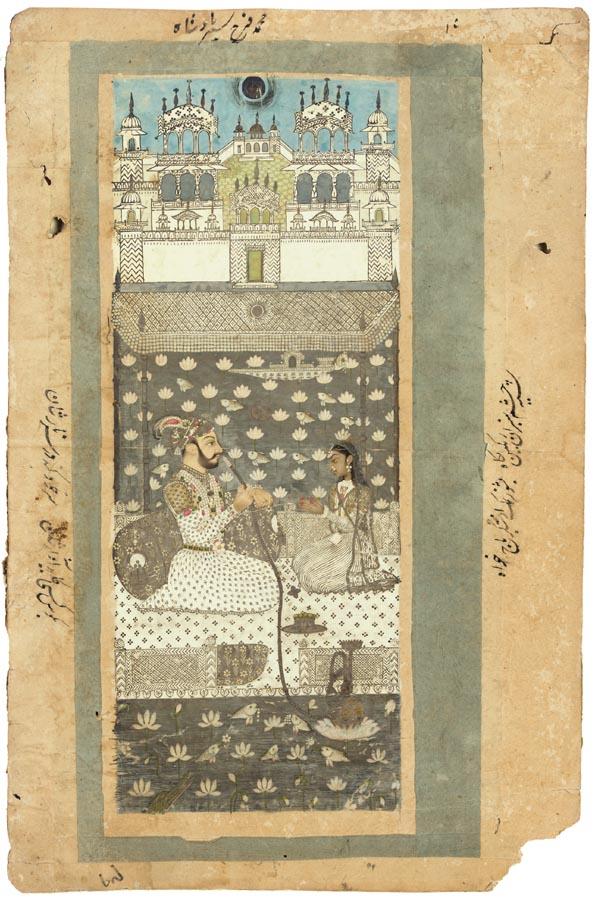

Muhammad Farrukhsiyar Padshah (r.1712-19), c.1712
Source:
http://search.sothebys.com/jsps/live/lot/LotDetail.jsp?lot_id=4FGLL
(downloaded May 2005)
"A PORTRAIT OF MUHAMMAD FARRUKH SIYAR PADSHAH, THE REVERSE WITH CALLIGRAPHY BY MUHAMMAD MUSA HUSAYNI TIRMADHI, DECCAN, INDIA, DATED 11TH RAMADAN 1124 / 12TH OCTOBER 1712; gouache on paper laid down on stout paper, with uncoloured border, inscribed at the margins in black nasta'liq, the verso with three couplets of diagonal nasta'liq above a horizontal single line, the ruler and an attendant seated on a terrace within a lotus pond, a palace in the background
CATALOGUE NOTE: This miniature is an elegant moonlit portrait of Muhammad Farrukh Siyar Padshah smoking a hookah with a female attendant. The lotus pond before them has been rendered in subdued tones of grey and silver, now oxidized. A reflection of the moon is also visible in the pond, that is teeming with fish and even a crocodile. Muhammad Farrukh Siyar (1697-1719), reigned as Mughal emperor from 1712 to 1719. His rule was sadly marred by internal strife and the growing power of the British East India Company. He was deposed and blinded in 1719 after Husayn 'Ali took control of the Deccan and a new monarch, Rafi' al-Darjat, was proclaimed emperor. Several months later the ill-fated Farrukh-Siyar was strangled.
The outer borders of this portrait are inscribed with Persian verses praising the 'black eyes' of the female attendant, and mentioning the 'water-pipe', but they are without further reference to the painting.
The verso of the album page is inscribed with three couplets from a ghazal in Persian and signed, "It was written on the eleventh day of blessed Ramadan, the first [regnal] year of Muhammad Farrukh Siyar (12th October 1712), the Triumphant King, by the needy Muhammad Musa Husayni Tirmadhi."
Muhammad Musa is recorded as a scribe of the Muhammad Shah period (1131-61/1719-48), who wrote in the style of Mir 'Imad. A calligraphic page by him is recorded in the Archaeological Museum of Delhi, whilst other examples of his work are illustrated in Mehdi Bayani, Ahval va asar-e khosh-nevisan-e nasta'liq, vol.viii, Teheran 1348, p.841."
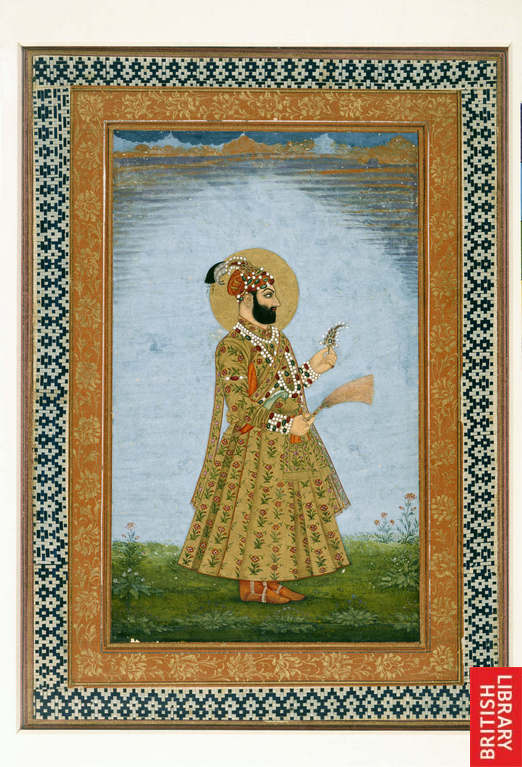
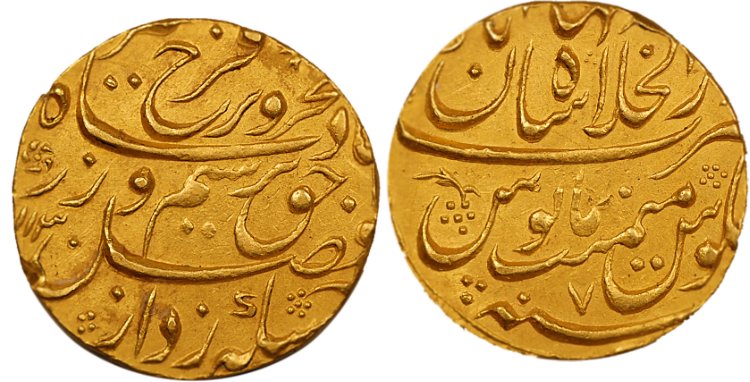
A gold mohur minted by Farrukhsiyar in the Khujista-Bunyad mint near the end of his reign, 1131 AH (1719)
Source:
http://www.vcoins.com/ancient/nbnumismatics/store/viewitem.asp?idProduct=584
(downloaded May 2007)
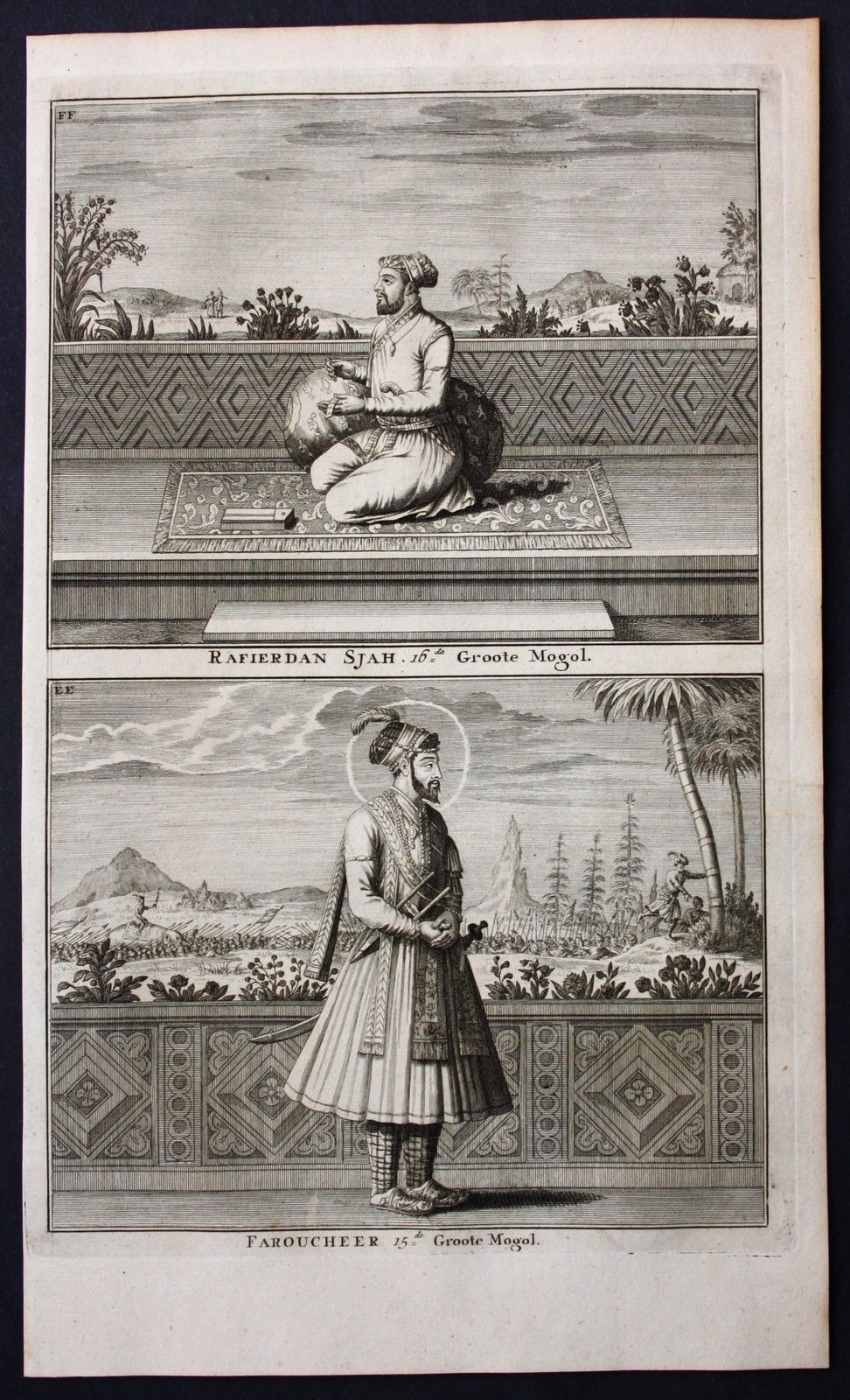
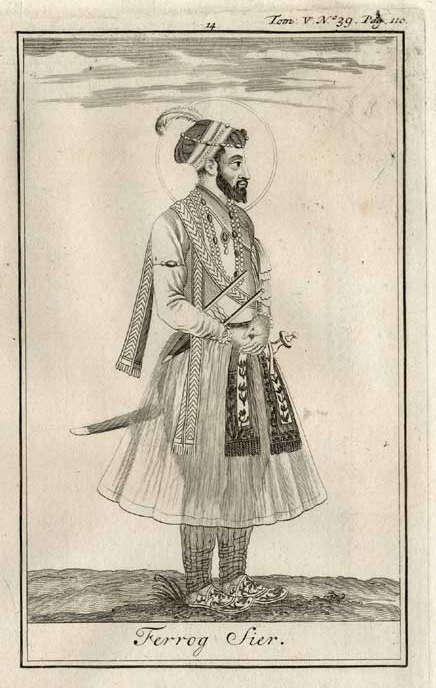
A view from 'Atlas
Historique...'
by Zacharie Chatelain, Amsterdam, 1732 (first ed. 1705-20)
Source: ebay, Jan 2010
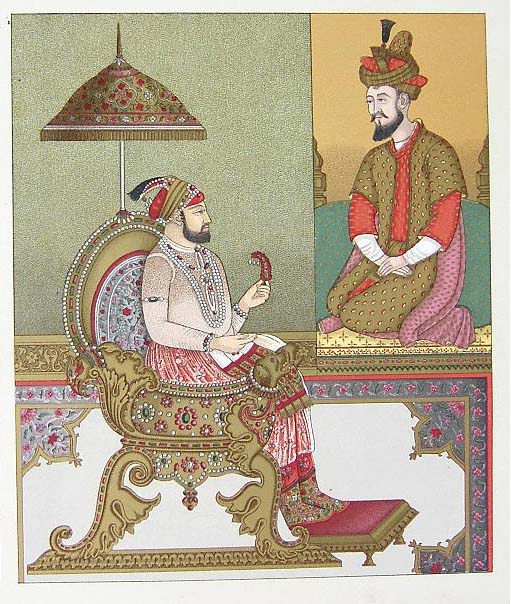
Farrukhsiyar, with an inset picture of Humayun; an engraving by Albert Racinet, Paris, 1878
Source: ebay, June 2007
== Indian Routes index == Indian Routes sitemap == Glossary == FWP's main page ==